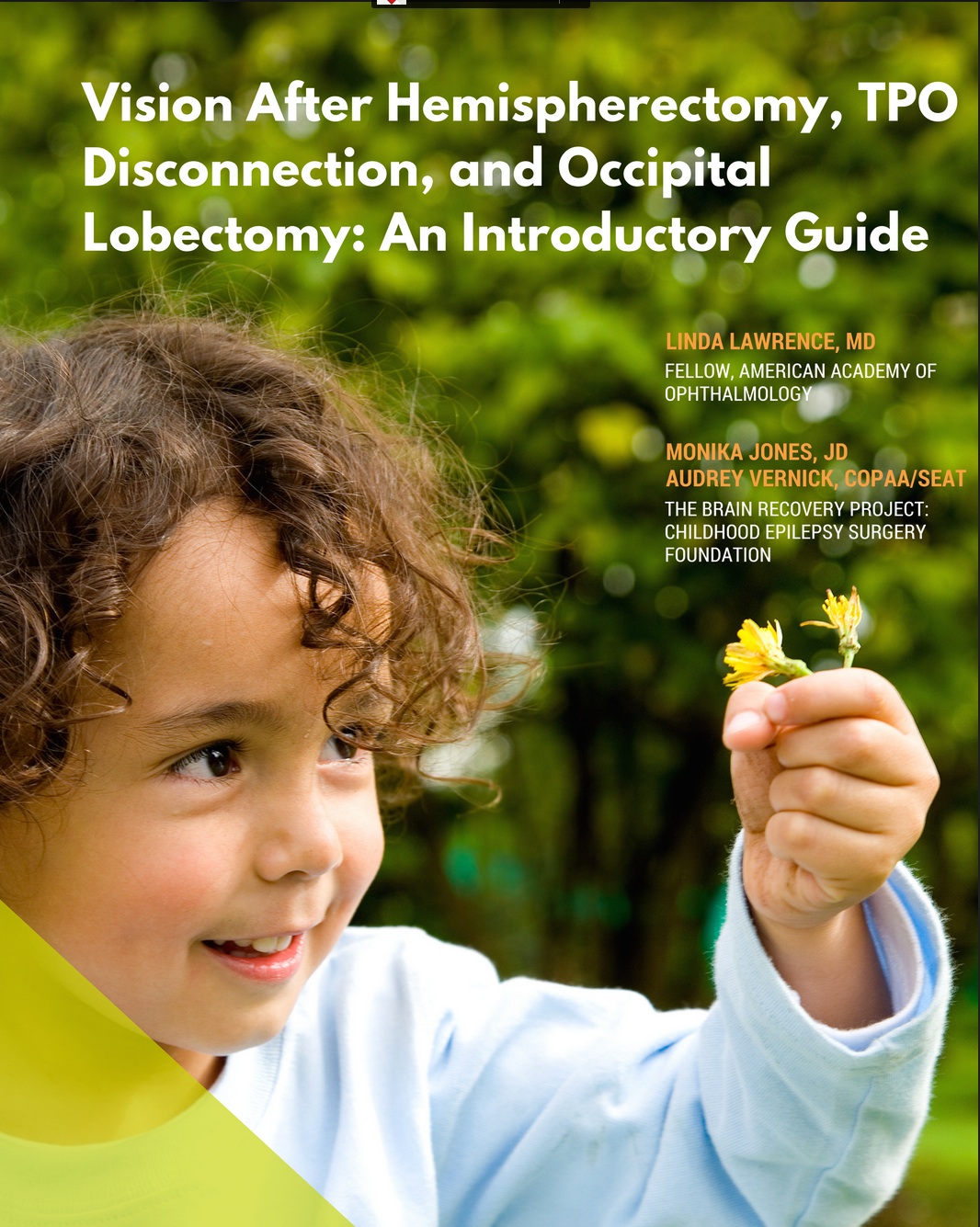
Resource
Vision After Hemispherectomy, TPO Disconnection, and Occipital Lobectomy: An Introductory Guide
This guide summarizes the various visual impairments a child will have after hemispherectomy, TPO disconnection, and occipital lobectomy
Vision After Hemispherectomy, TPO Disconnection, and Occipital Lobectomy is a 27-page introductory guide by Linda Lawrence, Monika Jones, and Audrey Vernick.
The introduction states:
Removing or disconnecting the occipital lobe, which occurs as part of hemispherectomy, temporo-parietal-occipital disconnection (commonly known as TPO disconnection), and occipital lobectomy, can have a profound impact on a child’s ability to see the world. For example, homonymous hemianopia, a type of cortical vision impairment, is an unavoidable and permanent side effect of these procedures. It can affect daily function at home, in the classroom, as well as other natural environments, and can have a serious effect on the child’s ability to read. This field loss, as well as problems with oculomotor control, visual processing, and other difficulties which may arise after surgery, must be understood by anyone who interacts with a child after these procedures.
This guide summarizes the various visual impairments a child will have after hemispherectomy, TPO disconnection, and occipital lobectomy, and how they can affect a child’s daily living, functional mobility, and access to the educational curriculum in school.
Table of Contents
-
Introduction
-
What Is Vision?
-
How the Typical Brain Sees
-
How Vision Is Affected by Surgery
- Acuity
-
Eye Coordination
- Eye control and reading
- Strabismus or “eye turning”
-
Field of Vision
- The central field
- The parafoveal field
- The peripheral field
- Homonymous hemianopsia
- Navigating the world
- Reading with homonymous hemianopsia
- Accommodations, modifications, and helpful strategies
- Compensatory strategies
- Color Vision
-
Visual Processing and Perception
- The dorsal and ventral streams
-
Vision Evaluations
- Medical evaluations
-
School evaluations
- Functional vision assessment
- Learning media assessment (LMA)
- Orientation and mobility assessment
- Assistive technology assessment
-
Helpful Products and Resources
-
Books, Websites, and Guides
-
Professional Organizations
-
-
Sources
